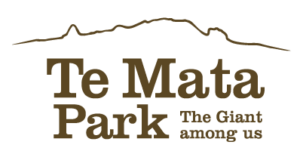Planting to restore Papatūānuku’s Cloak
by Tyne-Marie Nelson
Printed in Tihei Kahungunu of Hawke’s Bay Today on 29 June 2020
‘Having just passed Takanga o te Ra, our shortest day of the year, we find ourselves in the midst of winter. This is the season to whakapipiri, to take that extra bit of care with ourselves, to slow down, and to look after one another. Takarua is also the season we give back to Papatūānuku by planting trees and restoring her cloak.
You see, over the past 150 years massive wetland drainage, land and biodiversity clearances across the Hawkes Bay region have drastically modified the landscape from its original state, resulting in us having lost 77% of the original indigenous forest that once covered the region. Papatūānuku is not meant to be bare, so when we plant trees, we are giving healing to our mother – connecting, tending, restoring.
The reason we plant in winter is so that the ground is soft enough for the delicate roots of the young trees to penetrate, and so, by the time they experience their first Hawkes Bay summer, they are well established and more likely to survive the hard times. The earlier we plant, the longer they have to establish, yet the ground needs to be wet enough to get the spade into – so last week’s rains were a good start!
Te Mata Park is planting 6000 trees this year, with one area just below the main carpark destined to be a rongoā garden. This will be an easily accessible garden that visitors will be able to walk through and learn about plants used traditionally as rongoā. With an ever-growing interest in rongoā Māori throughout the rohe, such an accessible resource will be an asset to the community.
When planting trees for use as rongoā, it is important that the area is free of contamination such as exhaust fumes or any nasty run-off in order to protect the integrity of the medicine. Some popular rongoā species don’t naturally grow here, species such as kumerahou and kohekohe, and practitioners would do better to trade with others throughout the motu, as each of these plants dry and store well.
Today kawakawa is probably one of the most commonly used rongoā plants, in part due to it being easily identifiable by its heart shaped leaves and generally safe to use (those on blood thinners should be aware that it can interfere with medication when taken internally). However, it seems that species such as harakeke, koromiko, kowhai, poroporo and tutu were the more commonly used rongoā throughout Te Matau a Maui back in the day. This makes sense when you consider our landscape – kawakawa being a sub-canopy species whereas the others are quite hardy and grow well in exposed areas throughout the rohe.
The planting day for the rongoā garden is Saturday August 8th from 9am and all are invited to join us. A shared kai and light refreshment will be provided as well as some kōrero on rongoā from some of our rongoā roopu. Anyone interested in being on the rongoā garden database get in contact with Te Mata Park.’
 Five times winner of the prestigious international green space award.
Five times winner of the prestigious international green space award.


 Jan Kupka
Jan Kupka